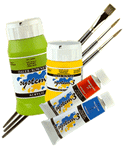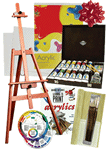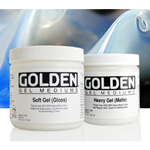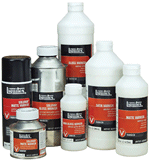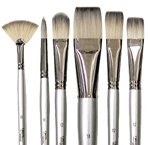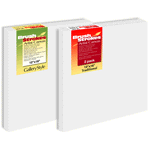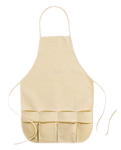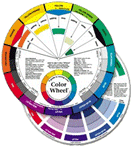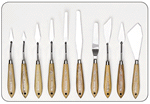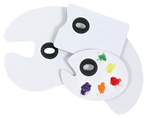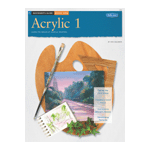ACRYLIC WATERCOLOR
APPLICATIONS & TECHNIQUES
Acrylic watercolor is a technique where acrylic paint is diluted to the consistency of watercolor paint and applied to an absorbent surface. Color values are usually built from light to dark.
CREATING ACRYLIC WATERCOLOR
Liquitex Professional Grade Medium Viscosity Concentrated Artist Color should be used for all acrylic watercolor techniques. The viscosity allows the paint to easily be dissolved with water. Simply mix colors with water to make acrylic watercolor.
ADVANTAGES OF ACRYLIC WATERCOLOR
Layers of color washes may be applied without dissolving underneath layers since acrylic paint dries to a water resistant paint film. Watercolor paint when dry is still water soluble and each layer of paint can dissolve the underneath layer. Note: Acrylic watercolor washes need to soak into the paper. The paper becomes a binder for the paint. Layers of washes will eventually seal the paper fibers and thus limit the amount of layering that is possible.
WATERCOLOR PAPERS
- Heavier weight watercolor papers are best. They hold more water and warp less.
- Cold Press watercolor paper is rough and absorbent.
- Hot Press watercolor paper is smooth and may not be as porous . Mixing colors with Flow-Aid Water will help to achieve deeper stains and a more even application.
ACRYLIC WATERCOLOR APPLICATIONS
Transparent Washes
Transparent and translucent colors make the most vibrant acrylic watercolor colors. a The more water used, the more transparent the wash becomes.
Hard Edge Brushmarks
- Apply acrylic watercolor to dry paper.
Soft Edge ("bleed") Brushmarks
- Dampen paper with water or "Slow-Dri/ water" (see below). Apply acrylic watercolor unto damp paper surface.
- Create acrylic watercolor using Flow-Aid Water (1 part Flow-Aid Flow Enhancer to 20 parts water). Flow-Aid reduces surface tension, thereby softening edges.
Refer to Liquitex Paint Additives: Flow-Aid Flow Enhancer
Ultra-Soft Edge ('bleed") Brushmarks
- Dampen paper with Flow-Aid Water. Apply acrylic watercolor onto damp paper surface for deeper saturation of color.
Slowing Drying Time
Mix Liquitex Slow-Dri Fluid Retarder into water to create "Slow-Dri/water" (4 parts water to 1 part Slow-Dri). Use this mixture to create acrylic watercolor.
ACRYLIC WATERCOLOR TECHNIQUES Masking
- The process of protecting dry paint film from colors applied on top through the use of masking tapes and masking fluids.
- May be done before painting to protect white paper.
- May be done after each color application, to save specific color marks and details.
Masking Tape
Use a low tack tape, such as drafting tape or Scotch 811 tape, so colors underneath will not peel up when tape is later removed.
Masking Fluid
Apply with brush or pen. Masking Fluid may be removed at any time, by rubbing with finger or rubber cement eraser.


